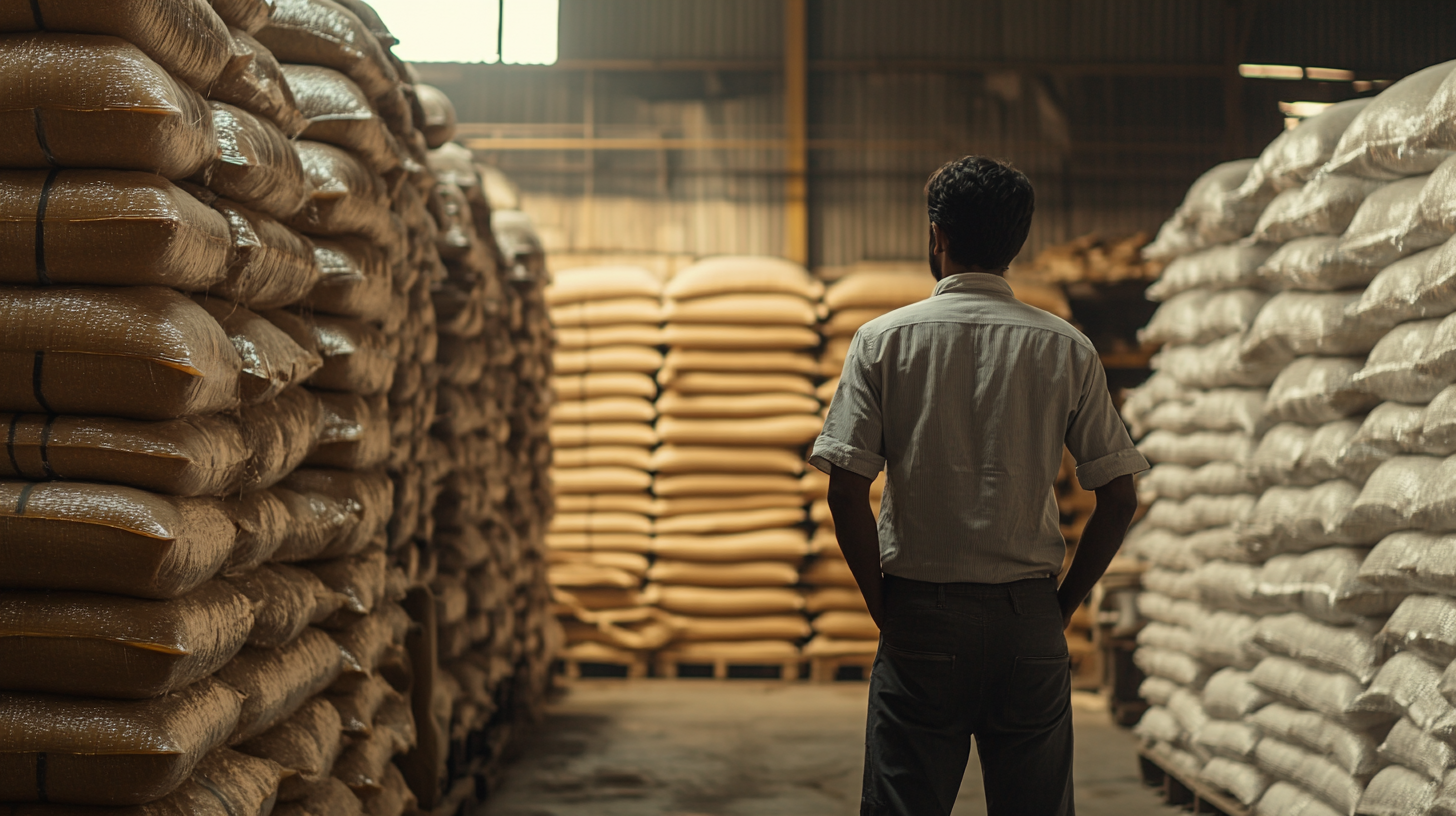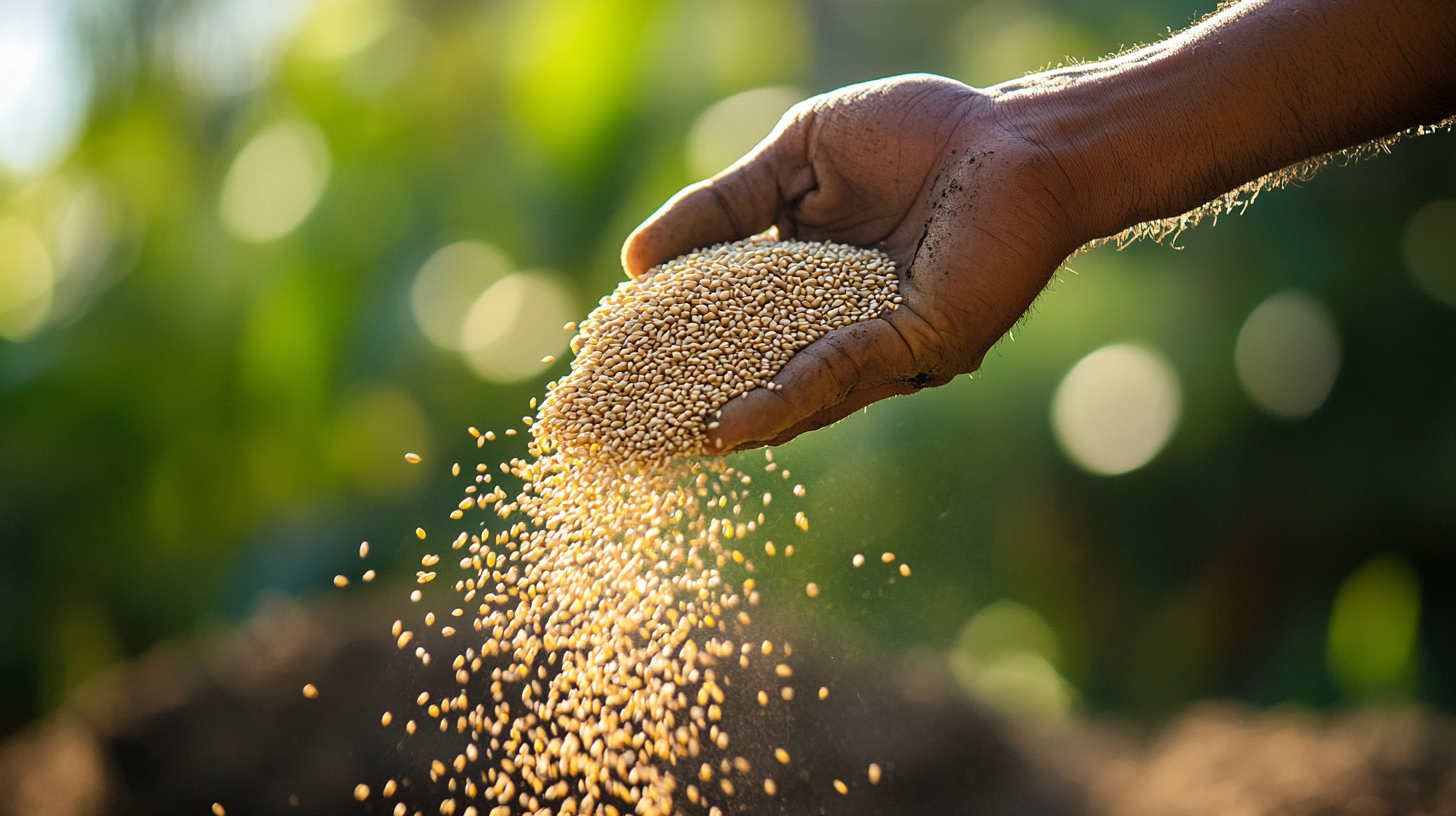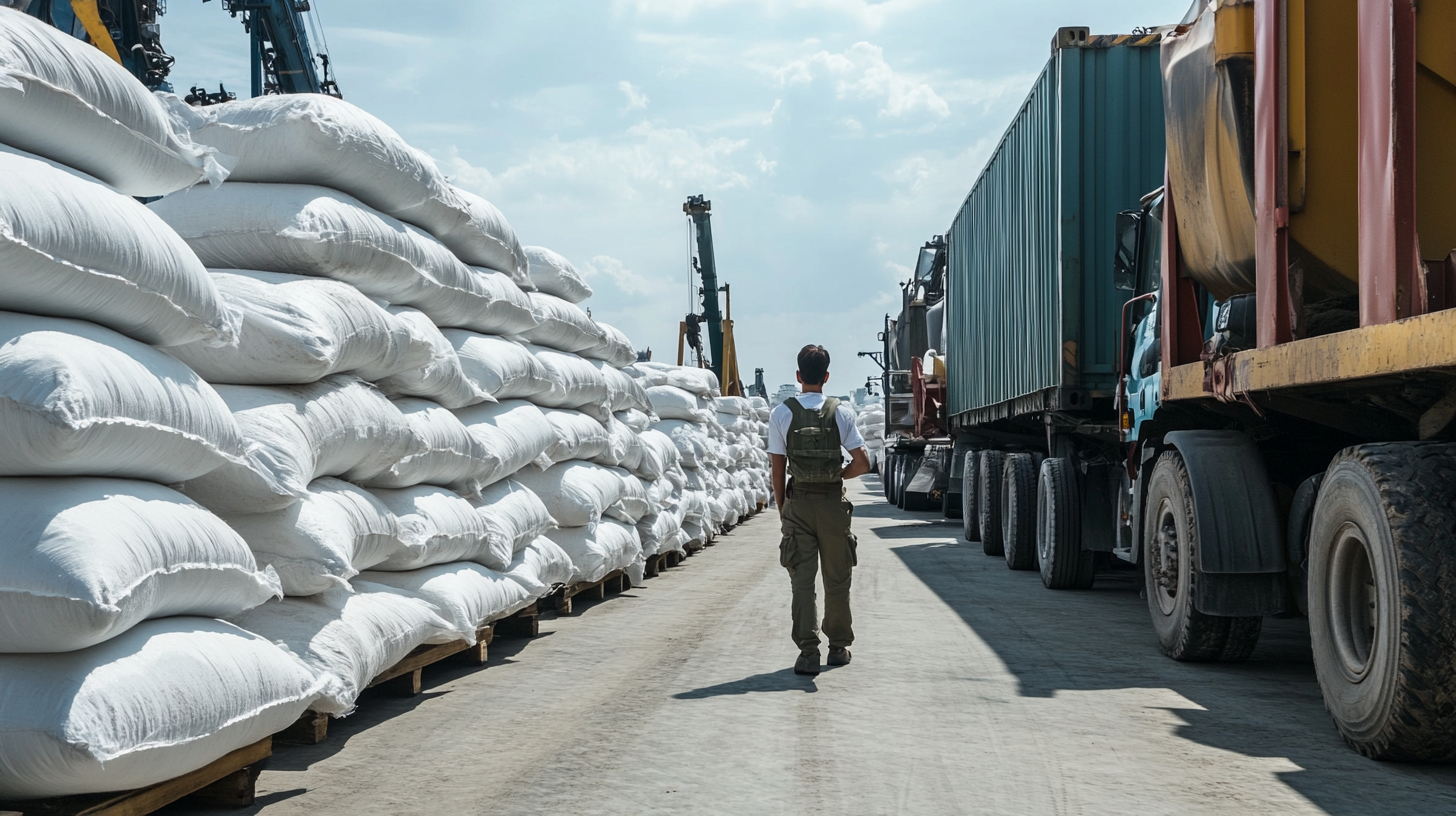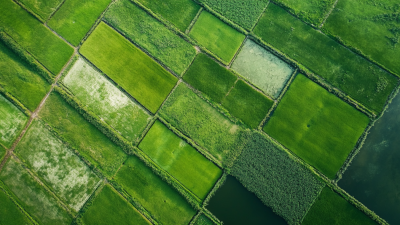 0551-68500918
0551-68500918 





You know, when it comes to global agriculture these days, figuring out where to get Agro Fertilizers has become super important for buyers looking to not just boost crop yields but also embrace sustainable practices. A recent report from MarketsandMarkets even predicts that the global market for Agro Fertilizers is going to hit a whopping USD 220 billion by 2025, growing at about 3.8% each year. That really shows how much people are craving new and effective fertilizer solutions that can elevate agricultural productivity while tackling the sustainability challenges we face in farming today.
Leading the charge in this area is Innovation Meiland (Hefei) Co., LTD. This company is all about research and development of cutting-edge pesticide products, formulations, and processes. Based out of Hefei, China, Meiland Stock is just dedicated to rolling out solutions that keep pace with the shifting demands of the industry. So, as global buyers try to navigate the tricky waters of sourcing Agro Fertilizers, it's crucial to really get a grip on market trends and utilize those innovative products. That's how they can gain that competitive edge and push forward agricultural growth.

You know, the world of agro fertilizers is really changing right now, and a lot of it has to do with folks wanting more sustainable farming practices. Lately, there's been a huge jump in interest for organic and eco-friendly fertilizers, which is totally reshaping what people are looking for and how the market is evolving. Some recent stats show that the global agro fertilizer market is expected to grow over 4% a year from 2023 to 2030. That's a clear sign that more and more people are becoming aware of how important soil health and good crop yields are. There are a few key trends shaking things up in this market. For one, we’re seeing some pretty cool advancements in fertilizer tech and smart new ways to deliver those nutrients. Things like biochemical fertilizers and slow-release products are getting popular because they’re not just efficient; they also do a better job of protecting our environment. Plus, with all the digital tech out there—like precision farming and data analytics—farmers and suppliers can really fine-tune their fertilizer use, which means more crops and less waste! But it's not just about innovation; we’ve also got some bigger global issues at play. Events like pandemics and trade conflicts have made people rethink how they source their materials. As a result, more buyers are looking to diversify their supply chains and build closer ties with local producers. These days, keeping up with market changes and diving into sustainable sourcing practices is becoming super important for anyone wanting to thrive in the agro fertilizer game.

Finding agro fertilizers on a global scale can be quite the adventure for international buyers, and let me tell you, it’s not without its fair share of headaches. One of the biggies is the crazy fluctuations in raw material prices, which are often swayed by geopolitical tensions and those pesky supply chain hiccups. The Food and Agriculture Organization (FAO) recently reported that fertilizer prices have shot up by more than 50% since 2020. Yikes! This surge can really throw a wrench in the works for budgeting and long-term planning for farms around the world.
Then there’s the whole regulatory maze to deal with. Every country seems to have its own unique set of rules about fertilizer formulations and safety. A study from the International Fertilizer Association (IFA) found that about 45% of international buyers find navigating these regulations to be a major roadblock. I mean, it's not easy! You really need to have a solid grasp of the market and often team up with local folks to make sure everything's compliant while keeping product quality up to snuff.
Oh, and let’s not forget about sustainability! These days, there’s a big push for eco-friendly practices, and it’s really changing the game. More than 60% of consumers are all about supporting sustainable agriculture, so now international buyers have to think about more than just cost and availability — they need to consider the environmental footprint of the fertilizers they're sourcing. Balancing these new sustainability demands with the need for reliable supplies? That’s definitely a tricky tightrope walk for global agro fertilizer buyers.

You know, climate change is really shaking things up for the global supply chain when it comes to agro fertilizers. It's not just about how much we can produce; it’s also about how we get it out there and how accessible it is for everyone. A report from the Food and Agriculture Organization (FAO) points out that as temperatures climb and extreme weather hits, crop yields can take a hit too. This means we end up leaning more on fertilizers to keep things growing like they should. And with all the craziness in the supply chain thanks to climate-related events, pricing and availability can really start to bounce around.
What’s even more interesting (or concerning, really) is that the International Fertilizer Association (IFA) predicts a steady growth in global fertilizer demand—about 1.6% each year until 2030. Why? Because we’re gonna need more food as the population keeps growing. But here’s the kicker: the fertilizer industry is really feeling the heat (literally!) from things like natural disasters that cause supply chain headaches. Just think back to 2021, when flooding in critical farming areas led to major delays in getting fertilizers delivered. It’s a real eye-opener about how fragile our systems can be.
So, buyers are definitely gonna have to think on their feet and switch up their sourcing strategies. Looking into local production might be a good shout. There are reports that bringing climate resilience into business models could really help smooth things out. I mean, investing in some cool, innovative fertilizer alternatives and sustainable farming practices not only helps the planet but can also keep supply chains more stable as we navigate these uncertain times. It’s all about being proactive and really getting a grip on these changes if global buyers want to make sure they’re still in the game when it comes to accessing essential agro fertilizers.

So, when it comes to sourcing agro fertilizers, keeping on top of regulatory compliance is super important for buyers around the world. With markets getting more and more connected these days, figuring out all the ins and outs of import tariffs, standards, and regulations is essential if you're looking to make successful purchases. It’s crucial for buyers to really get to grips with the specific rules of the countries they’re sourcing from, not to mention their own national regulations that could throw a wrench in the importation process.
Import tariffs? Yeah, they can really hit the wallet, so it's vital for buyers to stay updated on the current rates and any changes that might come up with trade policies. On top of that, every country has its unique standards regarding product quality, safety, and environmental impact. So, doing a bit of homework to ensure you’re following both local and international standards is a must. This might involve getting certain certifications or proving compliance with established guidelines. Not only does this make the import process smoother, but it also helps in building some solid trust with both suppliers and consumers.
And you know what? Keeping an eye on any regulatory changes can really give buyers a leg up in the market. Getting involved with industry associations, hitting up trade events, and joining workshops centered around regulatory issues can be super helpful. By actively seeking out information and support, buyers can steer clear of compliance risks and streamline their sourcing strategies. This way, they can tackle the complexities of agricultural fertilizer procurement with a lot more confidence.
You know, the world of agro fertilizers has really changed a lot in recent years, mainly thanks to some cool tech advancements. For global buyers, using technology to find the right agro fertilizers isn’t just a nice-to-have anymore—it’s become a must. With tools like data analytics, supply chain management systems, and digital marketplaces, it’s so much easier to pinpoint the best products and suppliers that fit their specific agricultural needs. These innovations don’t just make things easier; they also help buyers make smarter decisions by giving them real-time insights into what’s happening in the market and the pricing trends.
Plus, tech makes it way easier for buyers and suppliers to chat and work together. Take e-auction platforms, for example—they let buyers connect directly with a bunch of suppliers at once. That sort of friendly competition can really help get better prices and terms. And with blockchain technology creeping into the scene, buyers can trace where their fertilizers come from and check out the sustainability creds of their sources. It's pretty neat!
As the global demand for food keeps climbing, figuring out how to source agro fertilizers is getting trickier. But here’s the thing: by diving into these tech solutions, buyers can tackle the risks that come with supply chain hiccups and changing regulations. Tools like predictive analytics can help them see what’s coming down the road, making the whole sourcing process more resilient and quick to respond to those market shifts.
You know, building sustainable partnerships with fertilizer producers is really important for buyers around the world who are trying to navigate the tricky waters of sourcing agro fertilizers. With everyone becoming more aware of environmental issues these days, we can’t really stress enough how vital sustainability is in farming practices. It’s essential for buyers to look for producers who genuinely care about eco-friendly production methods and are doing their best to shrink their carbon footprints. This means embracing renewable energy, taking good care of soil health with responsible fertilization, and making sure their products support sustainable farming systems.
Plus, when you have solid relationships with fertilizer producers, it really improves communication and transparency along the supply chain. By working closely together, buyers and producers can trade tips and innovative ideas on fertilizer application that hit the mark for both economic and environmental goals. For example, collaborating on research can lead to the development of specialized fertilizers that work great with local soil conditions, boosting crop yields while minimizing waste and ecological harm.
At the end of the day, successful partnerships are all about trust and a long-term commitment. Buyers should think about entering into contracts that reflect shared values around sustainability and ethical production practices. And honestly, these relationships can also create opportunities to share knowledge about sustainable practices, helping both sides grow and adapt in this fast-changing agricultural world. By focusing on sustainable partnerships, global buyers not only lock in a reliable fertilizer supply but also make a positive impact on the agricultural ecosystem and the communities involved.
So, when it comes to the market for agro fertilizers, there's a lot going on that can really shake up prices. You've got to wrap your head around these factors if you're a global buyer looking to nail down your sourcing strategies. One huge player in this game is the cost of raw materials. That can fluctuate wildly, influenced by everything from global supply chains to geopolitical events and changes in trade policies. For example, if something goes haywire in a key producing country, prices can shoot up fast, forcing buyers to rethink their procurement timelines and how they manage inventory.
Then there’s the whole issue of demand variability, which can seriously mess with market pricing. Think about it: seasonal agricultural cycles and changes in how crops are produced can cause fertilizer demand to spike, especially when it's planting time. That means buyers really need to keep an eye on market trends because if supplies are tight, prices could go through the roof. Also, new farming innovations and more land being cultivated can change the fertilizer landscape, impacting market conditions quite a bit.
And let’s not forget about regulations and environmental concerns—they’re playing an even bigger role in fertilizer pricing nowadays. Governments around the world are stepping up with stricter rules to limit certain chemicals, which can jack up costs for manufacturers and, ultimately, for us consumers. It’s essential for buyers to stay in the loop about these policies since they can affect not only prices but also the availability of specific types of fertilizers. By keeping up with these factors, global buyers can tackle the complexities of the fertilizer market with a bit more confidence and a strategic edge.
You know, as the world shifts gears towards more sustainable farming practices, the way we source agro fertilizers is really changing in some big ways. It's super important for buyers to keep an eye on the trends and what’s coming down the pipeline in the market. One really interesting prediction is that there will be a stronger focus on organic and bio-based fertilizers—these not only help our soils stay healthy but also fit right into the big picture of global environmental goals. With more and more consumers becoming health-conscious and eco-aware, we’re poised to see a surge in demand for organic inputs. This is definitely going to push producers to get creative and come up with new solutions in this area.
Oh, and let’s not forget about technology! It's going to be a game-changer for how fertilizers are sourced in the future. Smart agriculture is reshaping how farmers manage crop nutrition, using precision farming techniques to make fertilizer use way more efficient. For global buyers, it’s wise to look into new technologies that support data-driven decisions. That way, they can tweak their sourcing strategies to get the best yields while cutting down on waste. This kind of shift will boost productivity, and it could really help with cost-efficiency as well as environmental sustainability—win-win, right?
And on top of all that, we really can’t overlook the impact of geopolitical factors and supply chain issues. As global markets go up and down, buyers need to be flexible with their sourcing strategies. It can be super helpful to diversify supplier bases and build strong connections with local producers. This approach helps to dodge risks that come with international trade hiccups. Navigating the complexities of sourcing agro fertilizers effectively is all about staying adaptable and thinking ahead.
The growth of the global agro fertilizer market is driven by the increasing demand for sustainable agricultural practices, with a significant emphasis on organic and eco-friendly fertilizers.
The global agro fertilizer market is projected to grow at a CAGR of over 4% between 2023 and 2030.
Key trends influencing the market include advancements in fertilizer technology, innovations in nutrient delivery systems, and the rise of biochemical fertilizers and slow-release formulations.
Digital technologies such as precision farming and data analytics are helping farmers and suppliers optimize fertilizer application, maximizing yield while reducing waste.
Agro fertilizer pricing is influenced by raw material costs, demand variability due to seasonal agricultural cycles, and geopolitical events, among other factors.
Seasonal agricultural cycles can induce spikes in fertilizer demand, particularly during planting seasons, leading to increased competition for limited supplies.
Stricter regulations implemented by governments to control the use of certain chemicals can elevate costs for manufacturers, which in turn affects pricing for end consumers.
Buyers should diversify their supply sources and build relationships with local producers to mitigate risks associated with geopolitical factors and supply chain disruptions.
Staying informed about market changes is crucial for buyers to engage in sustainable sourcing practices and achieve long-term success in the agro fertilizer sector.
Innovations in farming practices and increases in land under cultivation can alter the landscape of fertilizer requirements, influencing market conditions.





